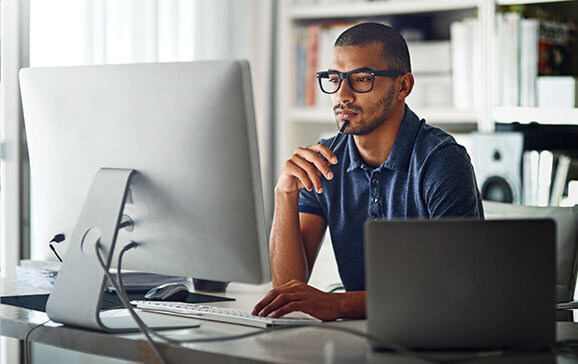SITUATION
• Capturing, routing and storing member information was manual and lacked consistency
• Operations needed to scale at a pace that aligned with the credit union’s growth trajectory
• The credit union sought a platform for automation that would integrate with existing tech stack
RESULTS
• All staff now use Laserfiche regularly in a variety of key processes
• Saved hundreds of hours each month
• Alleviated the burden of mergers as the credit union grows
“We address people’s needs and solve problems — it’s what credit unions do,” said Matthew Tingey, senior applications specialist at American United Federal Credit Union (FCU).
The philosophy has powered American United FCU since 1952, driving the organization’s growth to serve more than 26,000 people today. And along with that growth has come transformation, to create a single source of truth for records, integrate core technology systems and enable easier self-service for members.
“I was originally asking questions like, ‘Can I automate this? Can I batch process these things? Where can I take the annoying parts out of this process?’” said Tingey. “But it’s never good enough to solve my own problem. I need to solve problems for everyone in the organization. That’s where Laserfiche came in.”

The credit union now uses Laserfiche as its repository for member information, and the main workflow engine for automated processes across the organization, including finance, member relations, money movement and more, saving hundreds of hours each month and alleviating the burden of mergers as the organization continues to grow.
Centralizing and Standardizing Records Management
Like many growing organizations, American United FCU had information — including member documents, HR employee records, financial records and more — incoming from a multitude of channels, being handled in a variety of ways. Tingey, a dedicated credit union professional who has worked in every department across the organization, recognized a need to standardize archival of documents. At the same time, he saw an opportunity to automate information capture.
The credit union began using Laserfiche process automation to automate records management activities, routing documents to where they needed to be stored within the repository, with the needed metadata, no matter the source.
“We’ve processed multiple millions of documents through there,” said Tingey. “Employees just need to click, and it gets to where it needs to go.”
American United FCU, supported by Laserfiche solution provider Millennial Vision (MVi), has built out a Laserfiche program that also supports the organization’s total quality management initiative, which aims to improve processes with an eye toward growth and profitability.
“These tools help us do things more efficiently, bridge the gap between some of our other software tools, and let our teams work in better collaboration. They really solve a lot of problems.”
With the initial solution in place, it was time to connect other systems to eliminate human error and make the repetitive tasks around document capture and storage even easier.
“From there, I wanted Laserfiche to talk back to our core [account system] to verify the information being captured,” Tingey said. “Now, it’s not just member documents that we’re processing through the system but applications, loan documents, and other daily work. The process has expanded and grown. It’s the single source of truth, and really the backbone of our process automation.”
Connecting the Dots: Automating Processes Across the Organization
In addition to having Laserfiche verify information from the organization’s core, CUProdigy, the credit union has a number of integrations that support a more seamless everyday work experience for employees.
 “We’ve also built a large database of information that we want to track and report on in Microsoft Power BI, and Laserfiche plays a big role in that,” Tingey said, adding that he keeps track of data issues — caused by activities like an employee leaving the organization, for example — through daily reports. “Laserfiche is a big part of managing the data that is used to create those Power BI reports.”
“We’ve also built a large database of information that we want to track and report on in Microsoft Power BI, and Laserfiche plays a big role in that,” Tingey said, adding that he keeps track of data issues — caused by activities like an employee leaving the organization, for example — through daily reports. “Laserfiche is a big part of managing the data that is used to create those Power BI reports.”
Similarly, Tingey has transformed the way that the organization validates data, identifying potential issues through Forms processes (started by Laserfiche Workflow) that trigger when an issue occurs. These items were previously actively tracked by an employee on a continual basis; today, no one needs to remember to review the reports since processes are triggered in Forms when issues occur — plus, instructions are integrated into the form so that less training and individual knowledge is required to address them.
“More recently, we’ve added some API integrations with the core to this process,” Tingey explained. “We pull information out of CUProdigy to use in Laserfiche Workflow and Forms via database queries. Notes can be pushed back to accounts with a click of a button in a form. A couple of the items that instructed the user to fix an issue can now be resolved automatically via the API without human intervention. These data validations and the automation around them have allowed our QA to be more efficient, effective and consistent.”
One game-changing integration for the credit union was between Laserfiche and DocuSign, which allowed Tingey to automate a common activity for credit unions: member information changes. The legacy process was manually driven and admittedly not very employee- or member-friendly.
The organization has enhanced the overall experience for employees and members by embedding the entire process into Laserfiche Forms:
- An employee pulls up the member information change form, which auto-populates the member’s information.
- The employee identifies what needs to be changed.
- If the member is in-branch, the member uses the signature pad.
- If the member is not in-branch, Laserfiche interacts with the DocuSign API by sending information from Laserfiche Forms to DocuSign, and then to the member for signature.
- The employee attaches the signed document to the form and submits it in Laserfiche Forms.
- Laserfiche automatically routes the information to the relevant teams for review, approval, and task completion.
Similarly, the credit union’s wire transfer process has benefited from Laserfiche Forms and an integration with DocuSign.
“In terms of solutions, I borrow from myself,” Tingey said, explaining that he’s often able to build on successes by taking a process and repurposing it by making tweaks to forms or steps.
The legacy wire transfer process, which involved many manual activities performed by employees, left members and auditors with little visibility into the required steps. The new Laserfiche process, however, gives the credit union the ability to provide helpful context to the member about what they are signing and the wire disclosure via the DocuSign integration.
“Once complete, employees only need to click a button to attach it to the form, and processing of the wire in our core is done via API, with minimal tasks required by the employee,” Tingey said. The form is automatically routed to the necessary employees for review and processing, and all supporting documentation is archived in the Laserfiche repository with standard naming conventions and metadata.
 The new wire transfer process saves up to 25 hours of staff processing time per month, while also reducing opportunities for human error and increasing staff satisfaction.
The new wire transfer process saves up to 25 hours of staff processing time per month, while also reducing opportunities for human error and increasing staff satisfaction.
“We’ve taken all the annoying little parts out of the process, like downloading a PDF, uploading it to DocuSign, marking fields on it, manually sending it to the member, downloading it again, etc.” said Tingey. “Another benefit is that when the member is prompted for signature, information will pop up to tell them exactly what they’re doing. It will let them know we’re doing a change of information process and here’s that we’re changing, or a wire transfer and here’s our wire disclosure. So instead of just signing something because they’re being asked to sign something, members feel more informed and taken care of.”
Transforming the Member Experience
Since the initial implementation of Laserfiche for process automation, American United FCU has had a lot of success automating back-office activities as well as some member processes that employees handle. Going beyond the back office to positively impact the member experience has always been the ultimate goal, however.
“These automated processes are all increasing member satisfaction,” Tingey said. “Whether our members are in-branch or doing things remotely, they are saving time and don’t have to wait for a teller to manually find all the documents they need to get things done.”
Today, Tingey is focused on transforming the member experience with the launch of a new website, which will feature enhanced self-service features powered by Laserfiche Forms. One such feature is the rewards claim request, which enables members to claim an end-of-year dividend that the credit union offers as a perk for members based on the products and services they’ve used throughout the year. The claim form lists all of the possible products and services that qualify for a reward amount, and the member enters a few details to verify themselves. The form verifies this information against the database to qualify the submission, and a Laserfiche workflow sends an email confirmation, recording all activities into a database so that rewards can be paid out at the end of the year.
Laserfiche digitization and automation projects have supported increased focus on the member experience, even through significant periods of growth for the credit union. Since 2007, the organization has completed 10 mergers, enabling asset growth from about $39 million to just over $370 million (as of April 27, 2023).
While mergers are always a huge undertaking, the process was made less painful with standardized and automated processes in place. “Mergers are very, very large projects — everything gets dumped into a central location, and there’s cleanup and moving things around,” said Tingey. “If it weren’t for the structure from Laserfiche and the tools like Workflows, they would be nearly impossible.”
Laserfiche has become such a vital part of American United FCU’s infrastructure that many employees aren’t able to imagine life without it today.
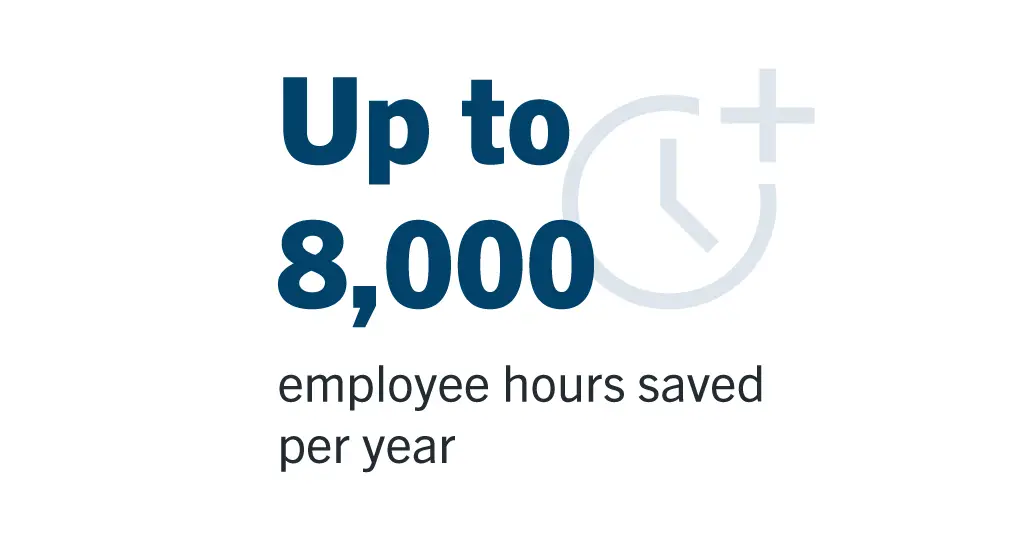 “Laserfiche is a cornerstone of our environment. The automation functionalities alone save us thousands of hours annually, but on top of that it helps us in so many ways to gather, process, and document nearly every piece of information that passes through our organization. There isn’t a single member of our team that doesn’t interact with Laserfiche, and most of them are working with the system throughout the day, every day.”
“Laserfiche is a cornerstone of our environment. The automation functionalities alone save us thousands of hours annually, but on top of that it helps us in so many ways to gather, process, and document nearly every piece of information that passes through our organization. There isn’t a single member of our team that doesn’t interact with Laserfiche, and most of them are working with the system throughout the day, every day.”
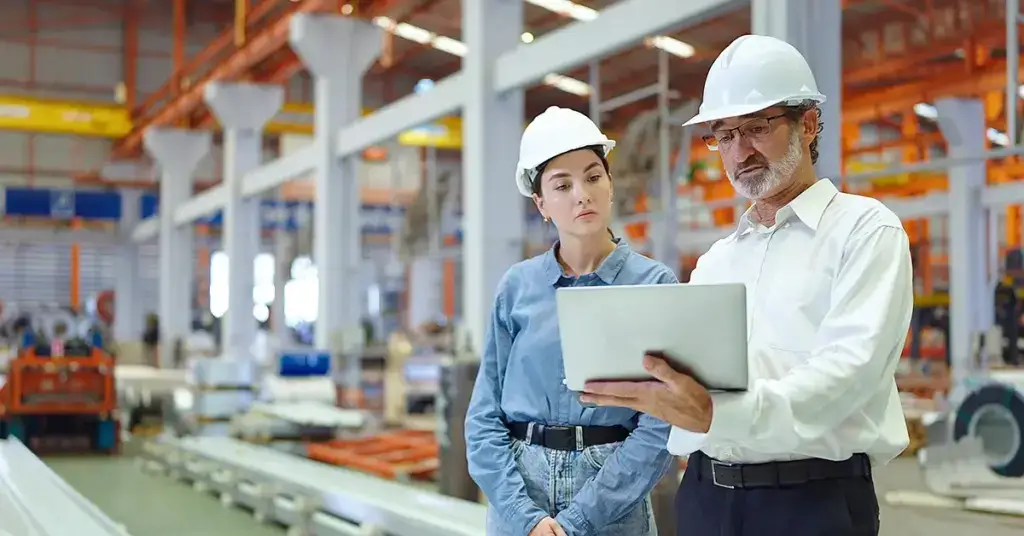
 Solution-driven metrics are another component contributing to 4Front’s digital transformation initiatives, utilizing monthly reports that provide insights on overall productivity, staff performance and trends on reason codes. Additionally, the company is actively identifying other departments and processes where Laserfiche could be deployed, including the HR department to centralize employee files, facilitate the onboarding process and track trainings and safety reporting. 4Front is also looking to digitize common manufacturing industry processes such as generating and managing bills of lading (BoL), as well as new product information documentation. To continue driving change, plans are in place to deploy Laserfiche in departments handling input and feedback from external stakeholders, such as the warranty team and in-records retention processes, as well as engineering change processes.
Solution-driven metrics are another component contributing to 4Front’s digital transformation initiatives, utilizing monthly reports that provide insights on overall productivity, staff performance and trends on reason codes. Additionally, the company is actively identifying other departments and processes where Laserfiche could be deployed, including the HR department to centralize employee files, facilitate the onboarding process and track trainings and safety reporting. 4Front is also looking to digitize common manufacturing industry processes such as generating and managing bills of lading (BoL), as well as new product information documentation. To continue driving change, plans are in place to deploy Laserfiche in departments handling input and feedback from external stakeholders, such as the warranty team and in-records retention processes, as well as engineering change processes.
 The difference in the automated process was significant. “Previously, the manual processes could take a week or longer,” Washburn said. “Today, it takes less than a minute.”
The difference in the automated process was significant. “Previously, the manual processes could take a week or longer,” Washburn said. “Today, it takes less than a minute.”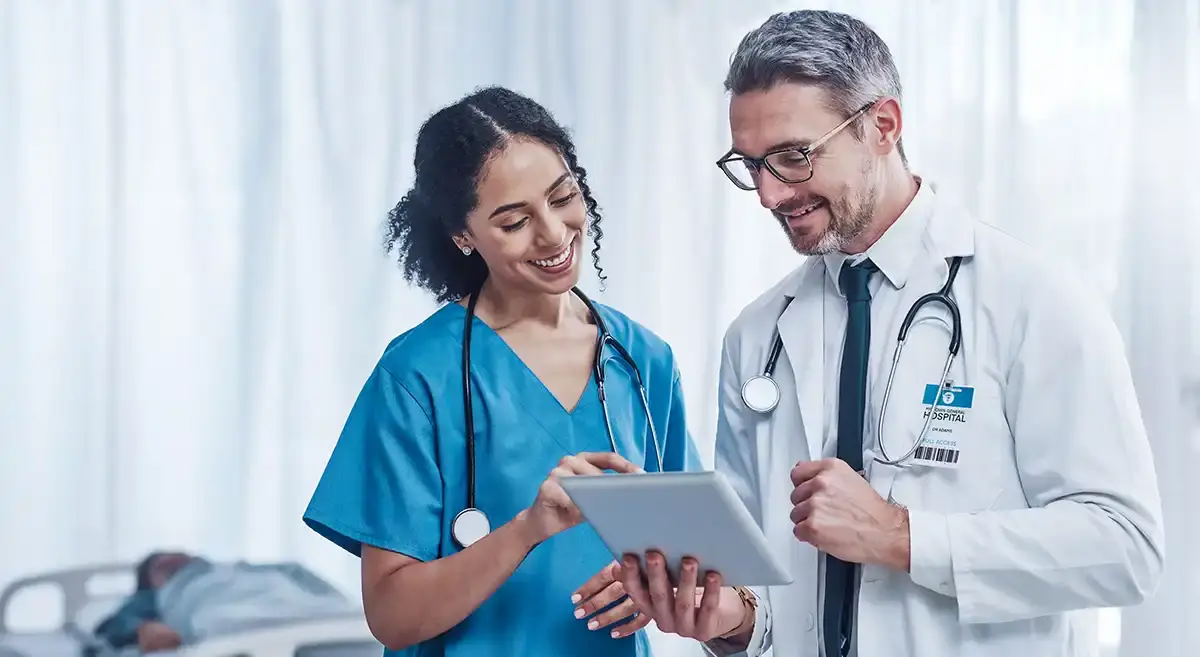 SIU also used Laserfiche to expedite the collection of patient information when a local healthcare provider retired. “There was a local practice where the provider retired, and all of their patients were transitioned into our practice,” Washburn explained. “We had to collect release of information notices, so we quickly deployed a Laserfiche form to streamline that process. Our clinical staff just had to enter the patient’s health record number. Our system integrates with our practice management system to pull everything automatically, which significantly reduced the time it would have taken manually.”
SIU also used Laserfiche to expedite the collection of patient information when a local healthcare provider retired. “There was a local practice where the provider retired, and all of their patients were transitioned into our practice,” Washburn explained. “We had to collect release of information notices, so we quickly deployed a Laserfiche form to streamline that process. Our clinical staff just had to enter the patient’s health record number. Our system integrates with our practice management system to pull everything automatically, which significantly reduced the time it would have taken manually.” “We have well over 2 million documents in our repository,” said Washburn. “If there’s not an existing folder structure for the area that we’re working in, Laserfiche Forms can create it dynamically. We make sure that everything lands in Laserfiche at the end of the day.”
“We have well over 2 million documents in our repository,” said Washburn. “If there’s not an existing folder structure for the area that we’re working in, Laserfiche Forms can create it dynamically. We make sure that everything lands in Laserfiche at the end of the day.”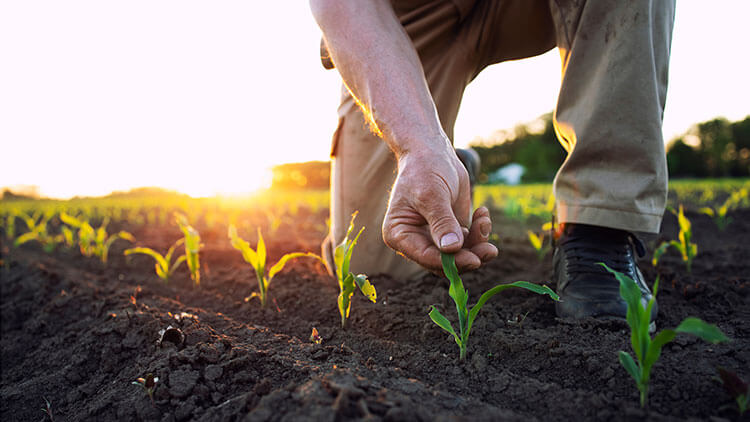
 This has significantly increased the efficiency of invoice review and finalization. NWFM has gone from processing 250 invoices a month to more than 1,000, with the potential to scale up as the company continues to grow.
This has significantly increased the efficiency of invoice review and finalization. NWFM has gone from processing 250 invoices a month to more than 1,000, with the potential to scale up as the company continues to grow.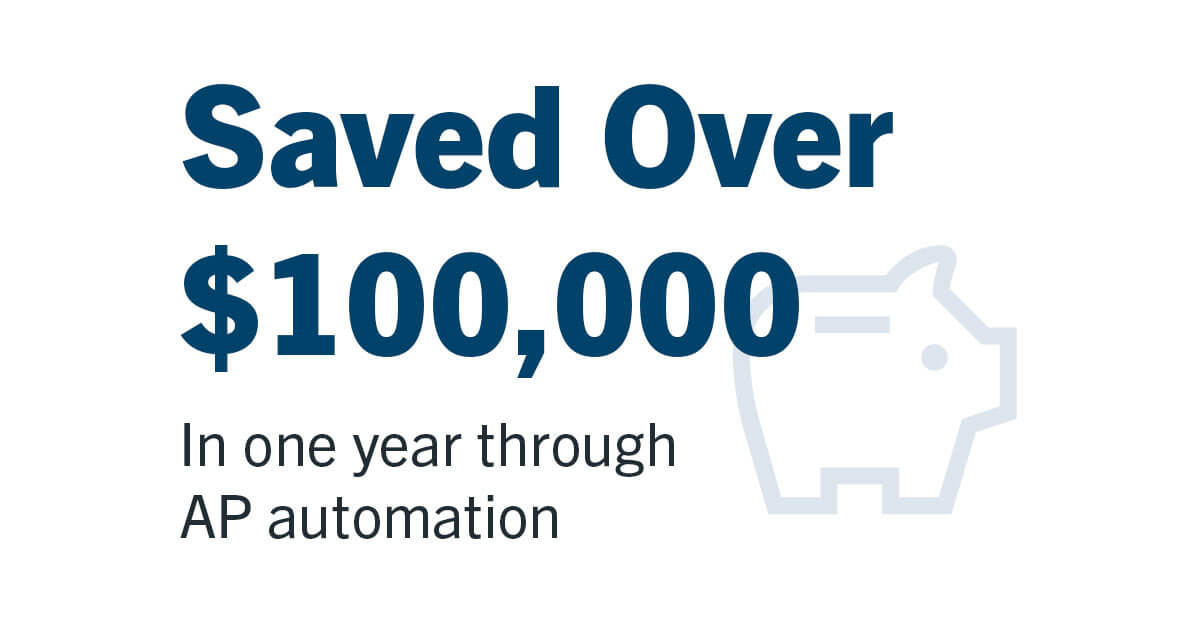 “We happily stopped counting savings after it exceeded $1,000 per month,” he said. “The savings was used to hire a chemical inventory specialist who now tracks inventory movement and returns unused stock. This allowed us to already return $72,000 in unused chemicals this year alone.”
“We happily stopped counting savings after it exceeded $1,000 per month,” he said. “The savings was used to hire a chemical inventory specialist who now tracks inventory movement and returns unused stock. This allowed us to already return $72,000 in unused chemicals this year alone.”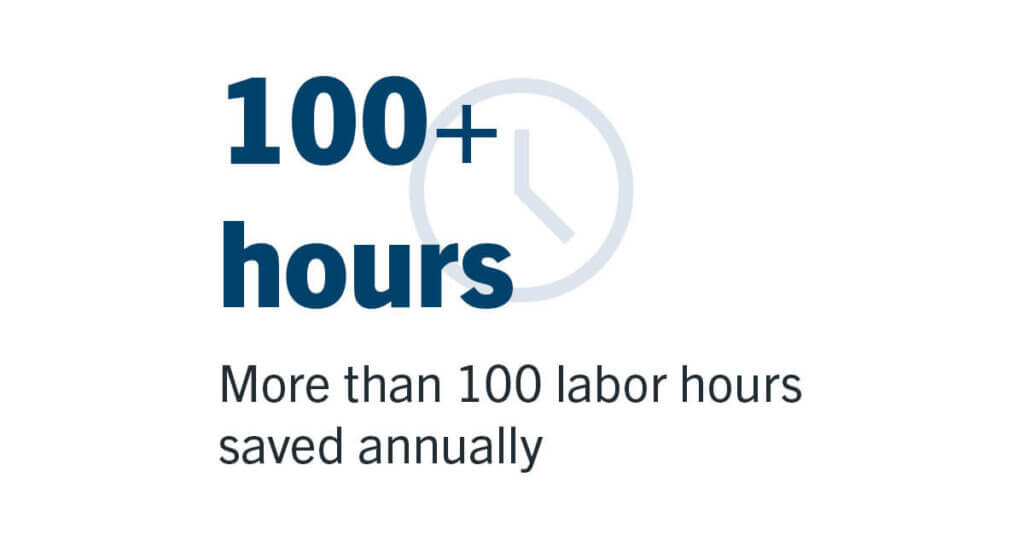 The new process allows applicants to fill out a digital Laserfiche form on the town’s website. Applicants attach their resumes; information is filed in Laserfiche and assigned a retention schedule, lessening the burden of managing paper records hidden in a filing cabinet.
The new process allows applicants to fill out a digital Laserfiche form on the town’s website. Applicants attach their resumes; information is filed in Laserfiche and assigned a retention schedule, lessening the burden of managing paper records hidden in a filing cabinet.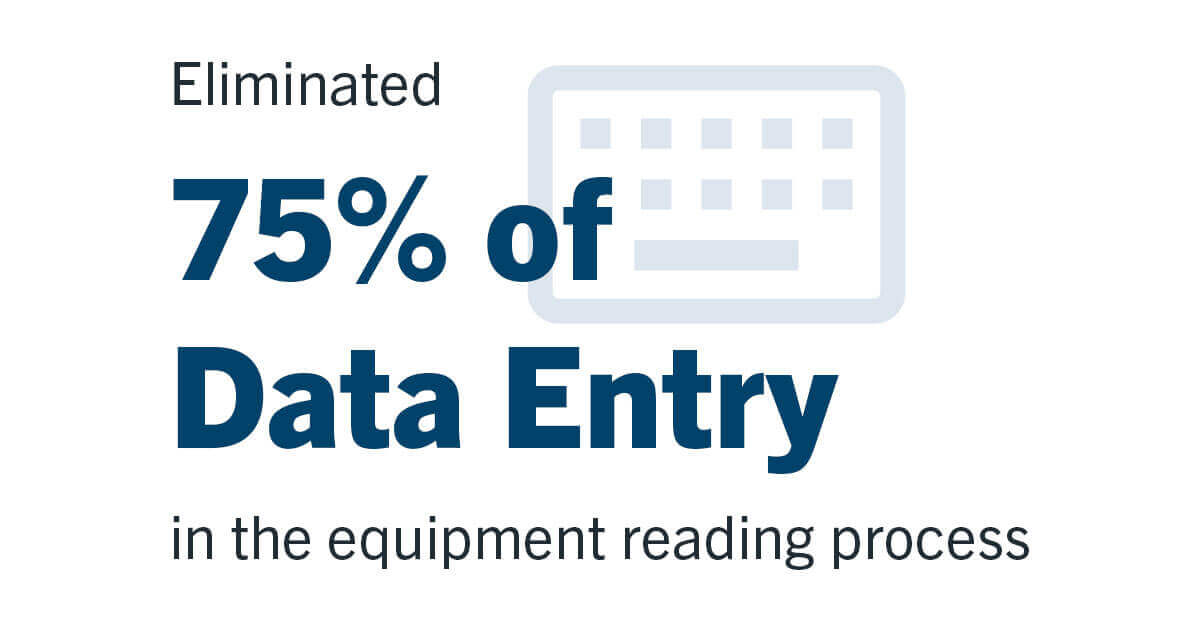 In addition to supporting the auditing process, the new equipment readings form has reduced the opportunity for error by eliminating 75% of the legacy process’s manual data entry. Johnson also estimates that the new process saves at least two hours per week in manual transcription, all of which results in huge efficiency gains for the public works department.
In addition to supporting the auditing process, the new equipment readings form has reduced the opportunity for error by eliminating 75% of the legacy process’s manual data entry. Johnson also estimates that the new process saves at least two hours per week in manual transcription, all of which results in huge efficiency gains for the public works department.
